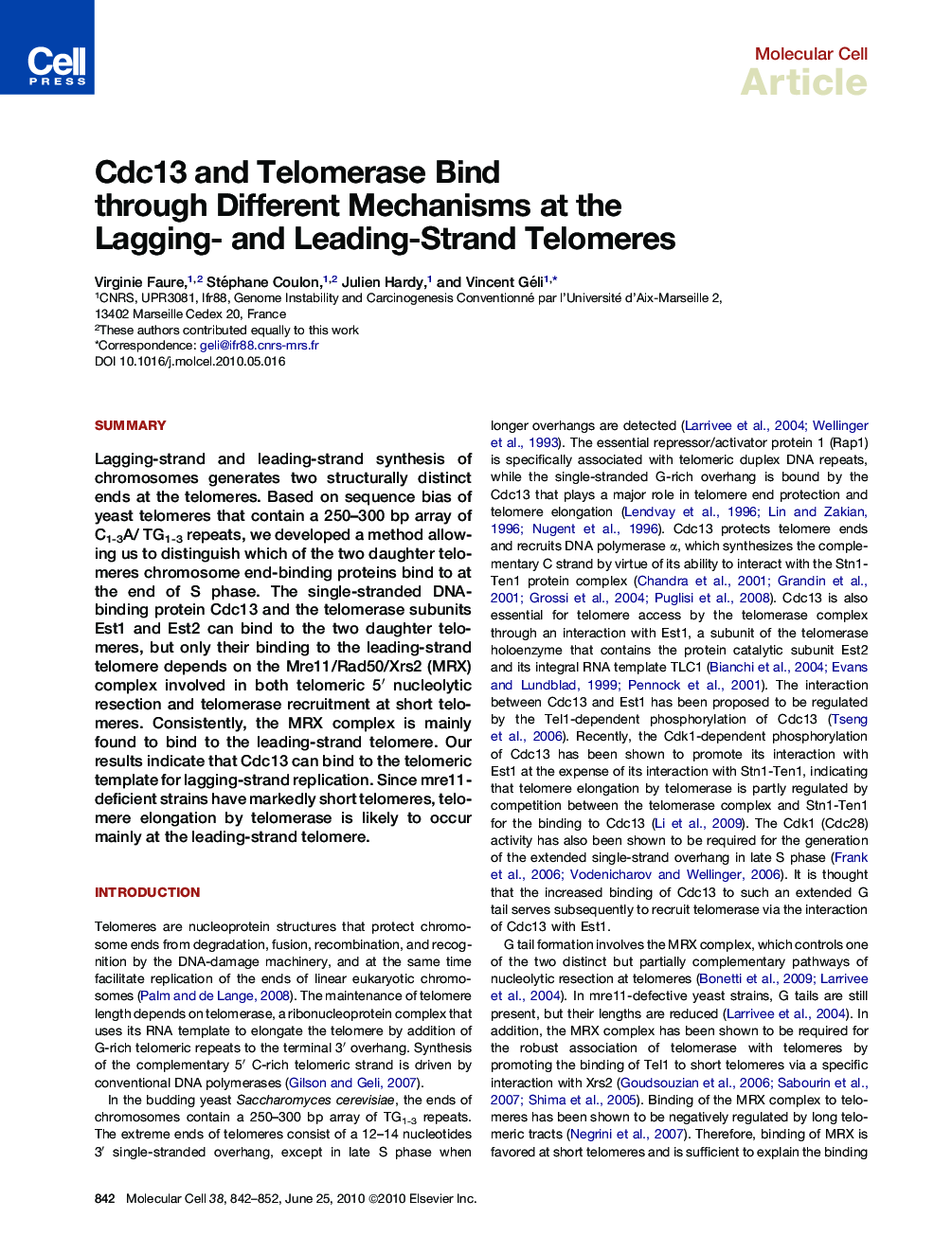| کد مقاله | کد نشریه | سال انتشار | مقاله انگلیسی | نسخه تمام متن |
|---|---|---|---|---|
| 1997109 | 1065541 | 2010 | 11 صفحه PDF | دانلود رایگان |

SummaryLagging-strand and leading-strand synthesis of chromosomes generates two structurally distinct ends at the telomeres. Based on sequence bias of yeast telomeres that contain a 250–300 bp array of C1-3A/ TG1-3 repeats, we developed a method allowing us to distinguish which of the two daughter telomeres chromosome end-binding proteins bind to at the end of S phase. The single-stranded DNA-binding protein Cdc13 and the telomerase subunits Est1 and Est2 can bind to the two daughter telomeres, but only their binding to the leading-strand telomere depends on the Mre11/Rad50/Xrs2 (MRX) complex involved in both telomeric 5′ nucleolytic resection and telomerase recruitment at short telomeres. Consistently, the MRX complex is mainly found to bind to the leading-strand telomere. Our results indicate that Cdc13 can bind to the telomeric template for lagging-strand replication. Since mre11-deficient strains have markedly short telomeres, telomere elongation by telomerase is likely to occur mainly at the leading-strand telomere.
Graphical AbstractFigure optionsDownload high-quality image (281 K)Download as PowerPoint slideHighlights
► Lagging-strand and leading-strand synthesis generates distinct ends at the telomeres
► Cdc13 and telomerase can bind to the two daughter telomeres
► Binding of Cdc13 and telomerase to lagging-strand telomere does not require Mre11
► Telomere elongation by telomerase mainly occurs at the leading-strand telomere
Journal: - Volume 38, Issue 6, 25 June 2010, Pages 842–852